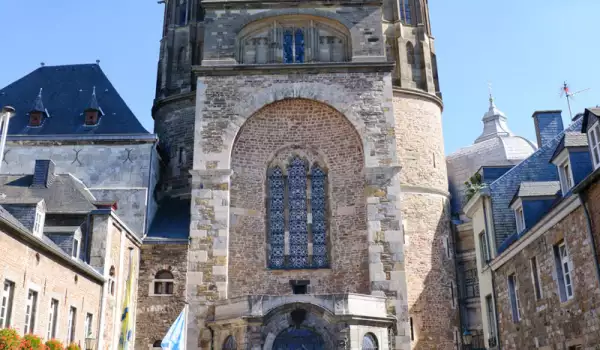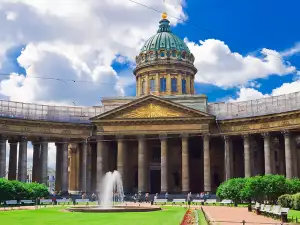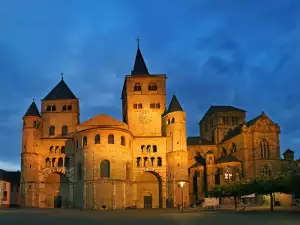Aachen Cathedral

Aachen Cathedral is not as big as the Milan Cathedral and Cologne Cathedral, but in contrast it is a monument of great historical, architectural and religious significance not only within Germany but throughout Europe. Aachen Cathedral is the oldest in the country. Built by Charlemagne, it is also known as Kaiserdom /Imperial Cathedral/, and contains priceless treasures from the early Middle Ages. Aachen Cathedral is one of the first 12 monuments in 1978 that are included in the UNESCO list of World Heritage Sites.
Considered one of the most important ecclesiastical treasures in Northern Europe, the Aachen Cathedral is the undisputed symbol of the German city of Aachen, located near the border of Germany with Belgium and the Netherlands, in North Rhine-Westphalia, about 65 km west of Cologne . From Aachen it is a short distance to the city of Maastricht.
Charlemagne himself chooses Aachen for his winter residence and built here in 778, the palace with a magnificent cathedral. The castle has not kept up today, but the cathedral is shining in all its splendor and is the greatest pride of the city. The cathedral became the object of annual pilgrimage, but by 1300 they organized this every seven years.
The Aachen Cathedral, shortly after its construction in 805 was the coronation place of many rulers. From 936 to 1531 in the cathedral in Aachen is carried coronation of the kings of the Holy Roman Empire. Today's Aachen Cathedral is built around a core dating from around 800 Pfalzkapelle of Charlemagne.
It consists of an octagonal central part, considered the oldest in northern Europe, surrounded by a corridor gallery. Its western end has a kind of altar, called westwerk. This part of the temple is an important part of building art at the time of the Carolingians, and Othons in the Romanesque period.
In the vestibule of the Aachen Cathedral are preserved gates from 9th century. There is a legend according to which the architect of the Imperial Temple signed a contract with the devil, who wanted the soul of the first newly built cathedral’s visitor. Residents of Aachen resorted to trickery and let one goat in the temple so that the devil was able to take only his soul instead of a human one. Then Satan in a fit of anger struck the gate, but one of his claws stuck. Today the devil footprint can be felt inside the main gates of the cathedral in Aachen.
The main part of the octagonal church was built with a pointed dome, under which hangs a chandelier donated by Frederick I Barbarossa in 1165. Among the priceless treasures of the Aachen Cathedral are the Golden Portal, crafted in the style of art at the time of the dynasty of Otto, a marble throne of Otto I and a decorated with ivory and encrusted jewels pulpit, which is a gift from the Emperor in 1014.
Treasure kept here is the golden bust of Charlemagne and his relics, which are stored in a chest of gold, adorned with figures of the Virgin Mary, its patron Saint Catherine and the Emperor himself. Here are the relics contained in the so-called relic of the three towers.
Among the precious relics are the gold plated bone of the right arm of Charlemagne, sarcophagus of Proserpine dating from the 2nd century, which suggests that there was laid the body of the emperor. In the Aachen Cathedral is a whole room dedicated to the Virgin Mary. Western gate of the temple is marked by large bronze doors known as Wolf's Doors.
Around 800 AD they were intended for the original gates of the Palatine Chapel and weigh 4 tons. Beyond the main altar is the Gothic cathedral the of people in Aachen, known as the Capella vitrea - Glass Chapel. Spectacular views of this part of the temple, built in 1414, consist of high clear glass in 13 different shades. The original windows are broken during World War II, and the current are from 1950















